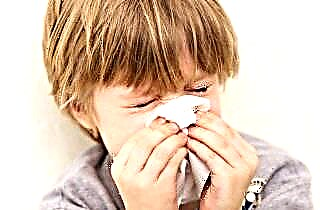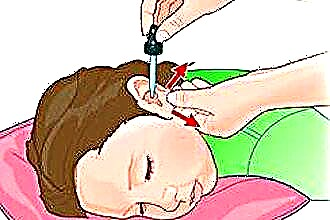The appearance of a rash in the oropharynx most likely indicates the occurrence of an infectious and inflammatory process. To make sure of the diagnosis, you need to conduct an objective examination, to assess the nature of the changes identified. Many diseases of the oral cavity and pharynx have features due to the type of pathogen and the severity of the course. If a rash is observed on the tonsils or glands, it may be associated with infection with herpes viruses or other infectious agents. What factors can be considered as the reasons if stomatitis in the throat is suspected, and how correct is this term in relation to diseases of the pharynx?
Causes

Could there be stomatitis in the throat? Although this definition is often used when a rash appears on the tonsils, in reality it is only valid for a rash within the oral cavity. The inflammatory process, accompanied by the presence of a rash in the pharynx, is regarded as pharyngitis, and the defeat of the tonsils is regarded as tonsillitis, or tonsillitis.
Although stomatitis is a collective term, denoting different types of inflammatory diseases of the oral cavity, stomatitis in the pharynx or on the tonsils is usually called a blister rash in these anatomical areas. Its appearance is caused by various infectious agents, therefore, lesions that can be regarded as stomatitis should be divided into several groups according to the type of pathogen:
- Enterovirus infection of the oropharynx and tonsils.
- Inflammation triggered by the herpes simplex virus.
- Lesion caused by the causative agent of foot and mouth disease.
One and the same virus can cause the development of various pathological conditions; you should also take into account the severity of the course, since a mild form of the disease can be mistaken for a classic ARVI (acute respiratory viral infection) due to the small number of rashes.
The phenomena of stomatitis can be combined with signs of pharyngitis and tonsillitis.
Adults are much less likely to experience the appearance of a bubbly rash in the throat than children - this is facilitated by already formed immune defense mechanisms, the presence of antibodies in the body after previous infections. At the same time, with immunodeficiencies, frequent acute respiratory viral infections, the constant influence of harmful factors on the mucous membrane of the pharynx and tonsils, not only the development of inflammation is possible, but also frequent relapses (repeated episodes) of the disease.
Enterovirus infection
Enteroviruses are a genus of viruses that include different types of pathogens, including Coxsackie and ECHO viruses. They affect the nervous system, the digestive system, as well as the skin and mucous membranes. Among the pathologies that can be mistaken for throat stomatitis, there are such as:
- herpangina;
- vesicular stomatitis.
 Herpangina is perhaps the most famous form of enterovirus infection. Moreover, it is rarely found in adults and is accompanied by characteristic changes in the mucous membrane of the uvula, tonsils, posterior pharyngeal wall:
Herpangina is perhaps the most famous form of enterovirus infection. Moreover, it is rarely found in adults and is accompanied by characteristic changes in the mucous membrane of the uvula, tonsils, posterior pharyngeal wall:
- redness and swelling;
- the presence of reddish vesicles (vesicles);
- no fusion of bubbles into single foci.
All these signs are observed at the initial stage of the development of the disease, and the primary changes look like reddish specks, which are transformed into nodules of a grayish hue and after a few hours - into vesicles. A blistering rash resembling stomatitis on the tonsils persists for several days. On days 4-5, large (more than 4 mm) vesicles ulcerate, and defects of the mucous membrane (aphthae) surrounded by a red corolla can be observed. Small vesicles regress without leaving any traces. Healing of the mucous membrane occurs on the 5-7th day.
Vesicular stomatitis, or foot-and-mouth syndrome, is characterized by rapid flow dynamics. A rash on the mucous membrane is presented first by spots, and then by bubbles, which persist no longer than 24-72 hours. In this case, the bubbles quickly ulcerate, after which aphthae remain on the surface of the mucous membrane. You should know that the skin is also affected - small vesicles appear on the palms and soles and other parts of the limbs. They are not prone to suppuration, regress without scarring within a week.
Describing the objective signs, one cannot fail to mention the pain syndrome. This is the expected manifestation when the lesion is localized in the oropharyngeal cavity. Pain when swallowing in adults in the case of herpangina is usually mild, the same can be said for FMD-like syndrome. Pain sensations naturally increase with irritation of the inflamed areas. Rarely enough, there are variants of the course in which an adult patient experiences excruciating pain - they are usually associated with a severe form of the disease, a widespread lesion, the presence of a significant number of vesicles and ulcers.
Enteroviral stomatitis on the tonsils in adults is not always accompanied by fever.
In many cases, the temperature reaction is expressed as subfebrile fever or is absent at all. An increase in body temperature in adult patients to febrile and pyretic indicators (38-40 ° C) can be observed with herpangin.
Herpes simplex virus
The herpes simplex virus, or herpes simplex after the initial infection, remains in the body forever. At the same time, he may not manifest himself for a long time (latent, or latent infection). The defeat of the mucous membranes of the oropharynx is observed in such forms as:
- Acute herpetic stomatitis.
- Recurrent (chronic) herpetic stomatitis.
Objective changes in the throat are similar, the course is different (acute onset in the acute form and gradual, phased in the chronic version). Small bubbles appear in the oral cavity, which are located in groups, contain a rapidly turbid serous exudate. The mucous membrane turns red and swells. Erosions form quickly, and on examination you can see different elements of the rash, since new vesicles appear when the body temperature rises again.
Typically:
- gingivitis (inflammation of the gums);
- damage to the area around the lips;
- the presence of crusts on the surface of the opened blisters on the skin.
The pain in herpetic stomatitis is very strong, it is difficult for patients to drink, eat, and talk. The severity of pain depends, in particular, on the number of vesicles, which, in severe form, cover a significant area of the mucous membrane. Recurrent herpes occurs when there are predisposing factors, including not only immunodeficiency, but also local changes (dry lips, trauma, cracks). Therefore, it is important to monitor the condition of the oropharyngeal cavity, to prevent the mucous membrane from drying out.
The defeat of the tonsils and pharynx with herpetic stomatitis is associated with ARVI disease.
In typical cases, the virus infects only the mucous membrane of the oral cavity, but if the patient has recently suffered from acute respiratory viral infections, the rash also spreads to the tonsils, the back of the pharynx. In this case, fever, pain and sore throat, coughing occurs.
Foot and mouth disease
The causative agent of foot and mouth disease is picornavirus, which is transmitted by the alimentary route (through raw milk, dairy products, as well as through unprocessed meat obtained from sick animals). Contact and airborne transmission cannot be ruled out in close contact with animals - care, treatment, sorting and disassembly of carcasses. At the same time, a sick person is not dangerous to others, since he does not spread the infection.
 Stomatitis on the tonsils manifests itself:
Stomatitis on the tonsils manifests itself:
- Burning, swelling and redness of the mucous membrane.
- The presence of small bubbles with transparent and then cloudy contents.
- Cheeks, gums, tongue, lips are also affected.
- Enlargement of the submandibular lymph nodes.
A skin rash, which is localized in the area of the interdigital folds of the upper and lower extremities, as well as in the nostrils and lips, can facilitate the recognition of foot and mouth disease. Blisters on the skin and mucous membranes often merge, ulcerate after a while, the patient experiences severe pain, it is difficult for him to speak and swallow. The destruction of the bubbles leads to the formation of painful erosions.
If the course is not complicated, then the healing of defects in the mucous membrane and skin occurs already on the 7th day from the onset of the disease. But cases are described when the infectious process lasted for several months, and the blistering rash regularly recurred.
A rash resembling stomatitis in the pharynx, with foot and mouth disease, is observed against the background of profuse salivation (salivation).
During the day, the patient can secrete up to 2-4 liters of saliva, which is a feature of the course and a hallmark of foot and mouth disease. Also, his eyes turn red, pain may occur when urinating, disorders of the digestive system.
Changes in the pharynx and tonsils that look like stomatitis are the reason for a mandatory consultation in a medical institution. Given the likelihood of severe pain, the patient may require the use of drugs - in particular, local and systemic pain relievers.



